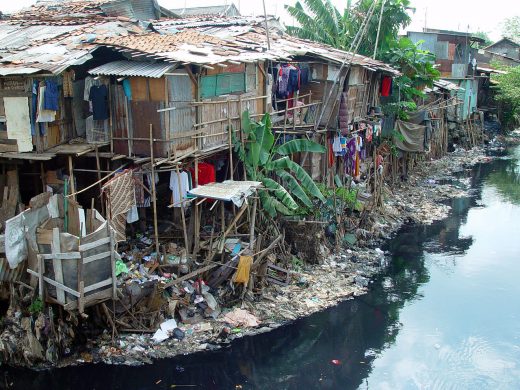Det fremgår af et opslag på Verdensbankens hjemmeside mandag:
A new World Bank report shows that climate change is an acute threat to poorer people across the world, with the power to push more than 100 million people back into poverty over the next fifteen years.
And the poorest regions of the world – Sub-Saharan Africa and South Asia – will be hit the hardest.
But the report – Shock Waves: Managing the Impacts of Climate Change on Poverty – also points to a way out.
This requires that poverty reduction and development work continue as a priority while taking into account a changing climate.
It also means taking targeted action to help people cope with climate shocks – such as developing early warning systems and flood protection, and introducing heat-resistant crops. At the same time, efforts to reduce emissions should accelerate, and be designed to protect the poor.
Landbrug vil blive hårdest ramt
Climate impacts will affect agriculture the most, a key sector in the poorest countries and major source of income, food security, nutrition, jobs, livelihoods and export earnings. By 2030, crop yield losses could mean that food prices would be 12 percent higher on average in Sub-Saharan Africa.
The strain on poor households, who spend as much as 60 percent of their income on food, could be acute. The resulting malnutrition could lead to an increase in severe stunting in Africa of 23 percent.
At the global level, warming of 2-3°C could increase the number of people at risk for malaria by up to 5 percent, or more than 150 million more people affected. Diarrhea would be more prevalent, and increased water scarcity would have an effect on water quality and hygiene.
The result would be an estimated 48,000 additional deaths among children under the age of 15 resulting from diarrheal illness by 2030.
Nødvendigt med “god” og “hurtig” udvikling
To prevent this grim picture becoming reality, the report prescribes “good” development that is rapid, inclusive and climate-informed.
This includes continuing and expanding programs that reduce poverty while increasing people’s capacity to prepare for and cope with shocks. For instance, in Kenya, the Hunger Safety Net Program prevented a five percent increase in poverty among beneficiaries following the 2011 drought.
These efforts will need to be coupled with targeted climate adaptation measures, such as protective infrastructure like dikes and drainage systems and mangrove restoration to deal with flooding, changing land-use regulations to account for sea level rise, disaster preparedness, and introduction of climate-resistant crops and livestock breeds.
In Uganda, the combination of new crop varieties and extension visits increased household agricultural income by 16 percent.
Uden god udvikling vil 100 mio flere leve i fattigdom
The report looks at different scenarios to 2030 and finds without good development more than 100 million additional people would be living in poverty. In India alone, an additional 45 million people could be pushed back over the poverty line by 2030, primarily due to agricultural shocks and increased incidence of disease.
“The report demonstrates that ending poverty and fighting climate change cannot be done in isolation – the two will be much more easily achieved if they are addressed together,” said Stephane Hallegatte, a senior economist at the World Bank who led the team that prepared the report.
“And between now and 2030, good, climate-informed development gives us the best chance we have of warding off increases in poverty due to climate change.”
Læs videre på Verdensbankens hjemmeside i nedenstående link.















